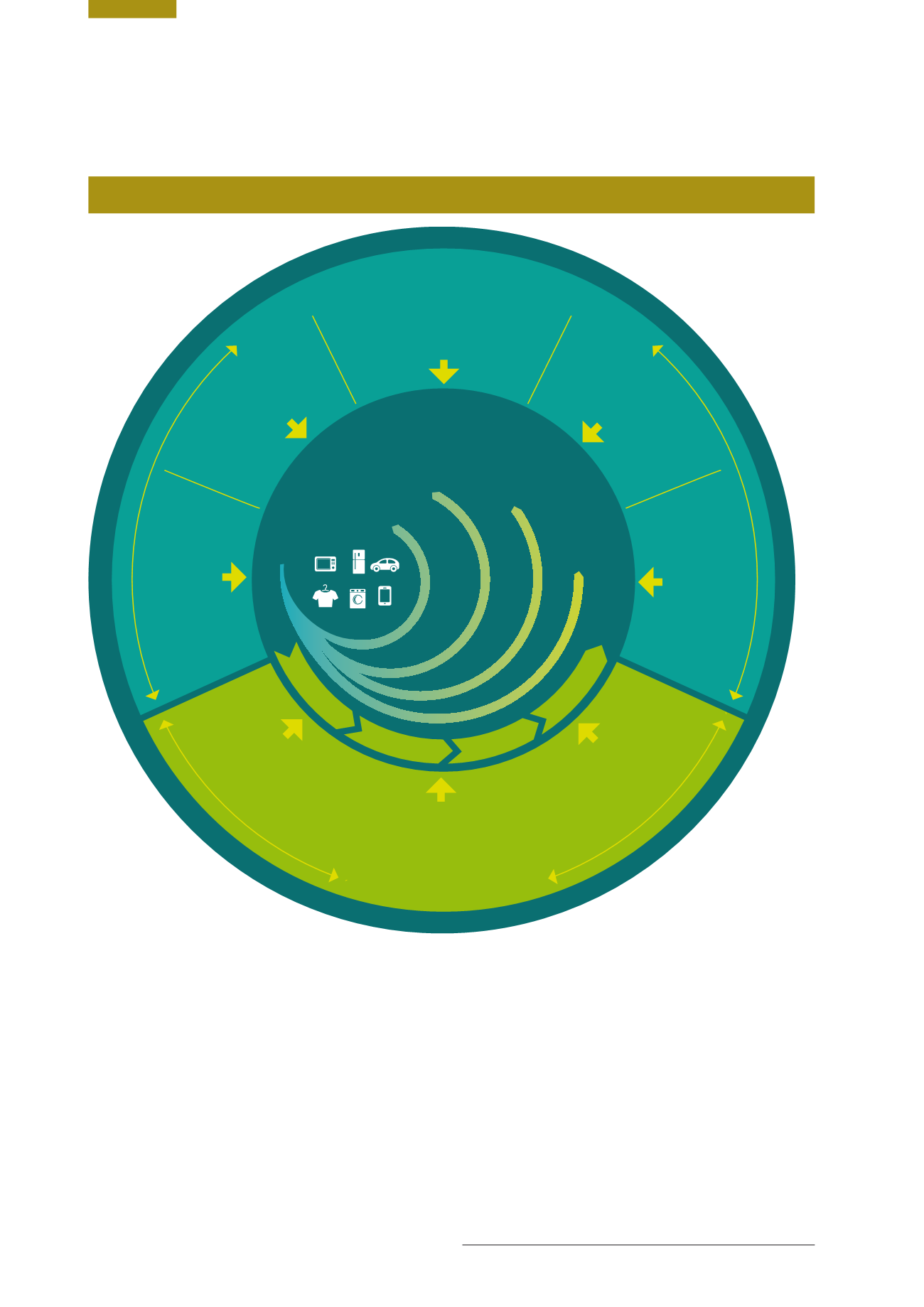

Ireland’s Environment – An Assessment 2016
154
Initiative discussed previously is also strongly integrated
with the EU circular economy policy area.
The enabling conditions needed to move to a circular
economy require wide-ranging integrated market
interventions such as eco-design, eco-labelling, life cycle
assessment, secondary materials standards, recycling,
durability, consumption awareness and education, clean
production, repair and reuse, green public procurement,
elimination of harmful chemicals, renewable energy,
carbon neutrality, etc. Most of these policies and concepts
will require major intervention over the coming years if
they are to become the reality and norm. Also of key
importance are appropriate price signals and research
into more efficient products and services. There are,
of course, huge challenges, not least of which is that
Ireland is an island nation and our economy depends on
imported raw materials sourced on the global market.
Significant opportunities also flow through, for example,
green goods and services design and delivery. From a
social and values perspective, the circular economy can
assist in driving an appreciation of sufficiency as regards
consumption behaviours. Advancing circular economy
ambitions – even on the limited material flow dimension –
is hugely challenging in terms of world trade agreements,
complexity of issues and influencing factors and cost; it
is undoubtedly a classically “wicked problem”.
8
Ireland
will be able to tackle many of these issues only as part of
the EU, by negotiating internal and international trading
8
Financial Times
lexicon
lexicon.ft.com/Term?term=wicked-problemFigure 9.5
Circular Economy – Material Flow Aspects (Source: EPA, EEA, 2016)
BEHAVIOURS
CHOICES
VALUES
WELLBEING
CULTURE
GLOBALISATION
BEST AVAILABLE TECHNIQUES
PRODUCTION COSTS
EMISSIONS
EMPLOYMENT
LIFE CYCLE ASSESSMENT
CRITICAL RAW
MATERIALS
STANDARDS
MARKETS
SUPPLY
SUBSTITUTION
PROPERTY
RIGHTS
ECO-SYSTEM
SERVICES
SUSTAINABILITY
RESOURCE
PRODUCTIVITY
EQUITY OF
ACCESS
CONFLICT
RETURN ON
INVESTMENT
CORPORATE
SOCIAL
RESPONSIBILITY
IMAGE
ECO LABELLING
TRANSITIONING TO A LOW CARBON, RESOURCE
EFFICIENT & SUSTAINABLE SOCIETY
& ECONOMY
I
N
F
L
U
E
N
C
I
N
G
&
E
N
A
B
L
I
N
G
F
A
C
T
O
R
S
D
R
I
V
I
N
G
F
O
R
C
E
S
A
W
A
R
E
N
E
S
S
R
E
S
E
A
R
C
H
C
O
N
S
U
M
E
R
S
&
U
S
E
R
S
B
R
A
N
D
S
/
C
O
M
P
A
N
I
E
S
S
T
A
K
E
H
O
L
D
E
R
S
P
O
L
I
C
Y
M
A
K
E
R
S
M
A
T
E
R
I
A
L
E
X
P
E
R
T
S
M
A
N
U
F
A
C
T
U
R
E
R
S
R
E
S
O
U
R
C
E
M
A
N
A
G
E
M
E
N
T
DESIGN
FOR
RESOURCE
EFFICIENCY
DESIGN
FOR
RE-USE
IN MANUFACTURE
DESIGN
FOR
MATERIAL
RECOVERY
DESIGN
FOR
LONGEVITY
PRODUCT/
SERVICE


















